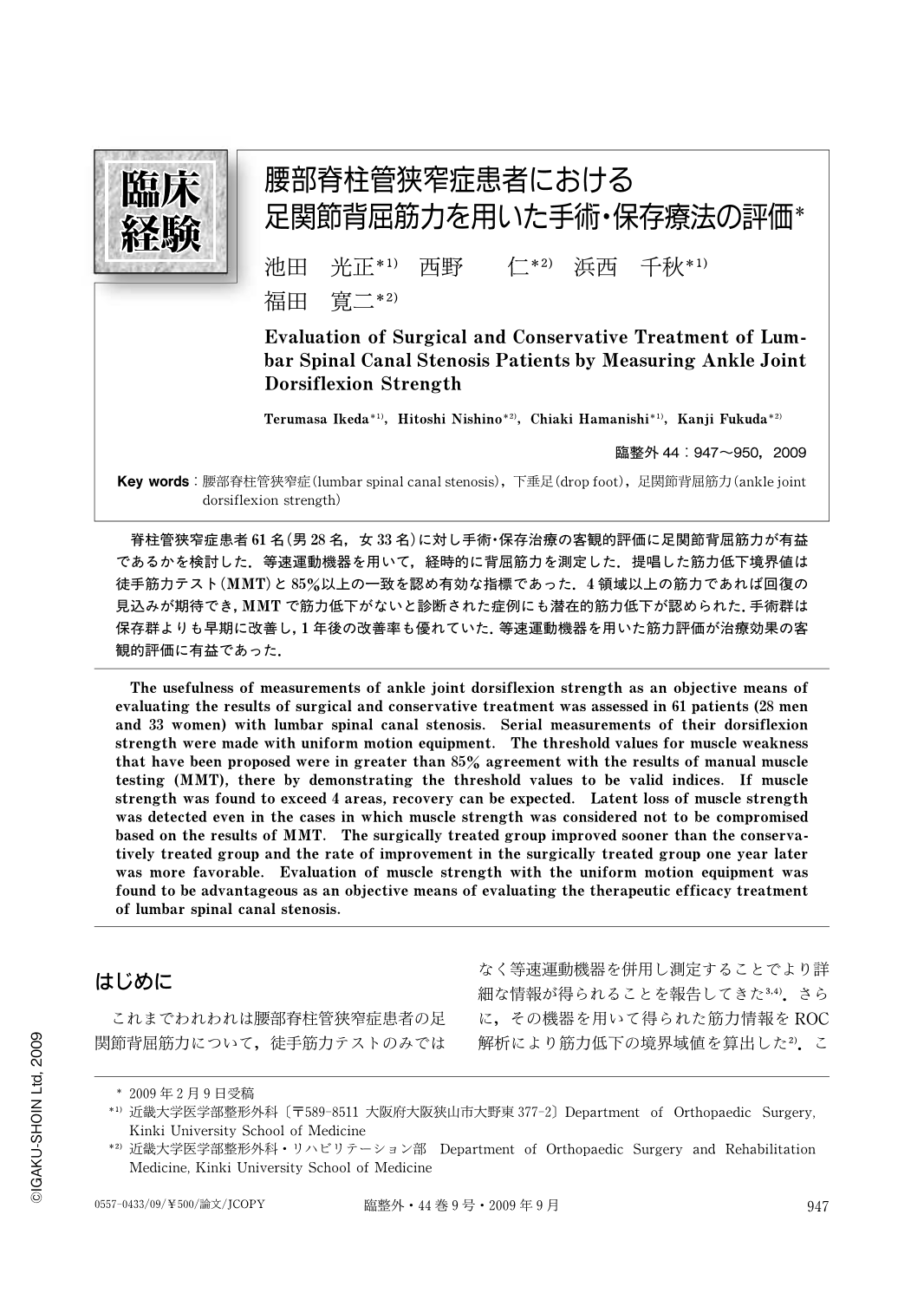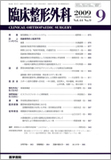Japanese
English
- 有料閲覧
- Abstract 文献概要
- 1ページ目 Look Inside
- 参考文献 Reference
脊柱管狭窄症患者61名(男28名,女33名)に対し手術・保存治療の客観的評価に足関節背屈筋力が有益であるかを検討した.等速運動機器を用いて,経時的に背屈筋力を測定した.提唱した筋力低下境界値は徒手筋力テスト(MMT)と85%以上の一致を認め有効な指標であった.4領域以上の筋力であれば回復の見込みが期待でき,MMTで筋力低下がないと診断された症例にも潜在的筋力低下が認められた.手術群は保存群よりも早期に改善し,1年後の改善率も優れていた.等速運動機器を用いた筋力評価が治療効果の客観的評価に有益であった.
The usefulness of measurements of ankle joint dorsiflexion strength as an objective means of evaluating the results of surgical and conservative treatment was assessed in 61 patients (28 men and 33 women) with lumbar spinal canal stenosis. Serial measurements of their dorsiflexion strength were made with uniform motion equipment. The threshold values for muscle weakness that have been proposed were in greater than 85% agreement with the results of manual muscle testing (MMT), there by demonstrating the threshold values to be valid indices. If muscle strength was found to exceed 4 areas, recovery can be expected. Latent loss of muscle strength was detected even in the cases in which muscle strength was considered not to be compromised based on the results of MMT. The surgically treated group improved sooner than the conservatively treated group and the rate of improvement in the surgically treated group one year later was more favorable. Evaluation of muscle strength with the uniform motion equipment was found to be advantageous as an objective means of evaluating the therapeutic efficacy treatment of lumbar spinal canal stenosis.

Copyright © 2009, Igaku-Shoin Ltd. All rights reserved.


